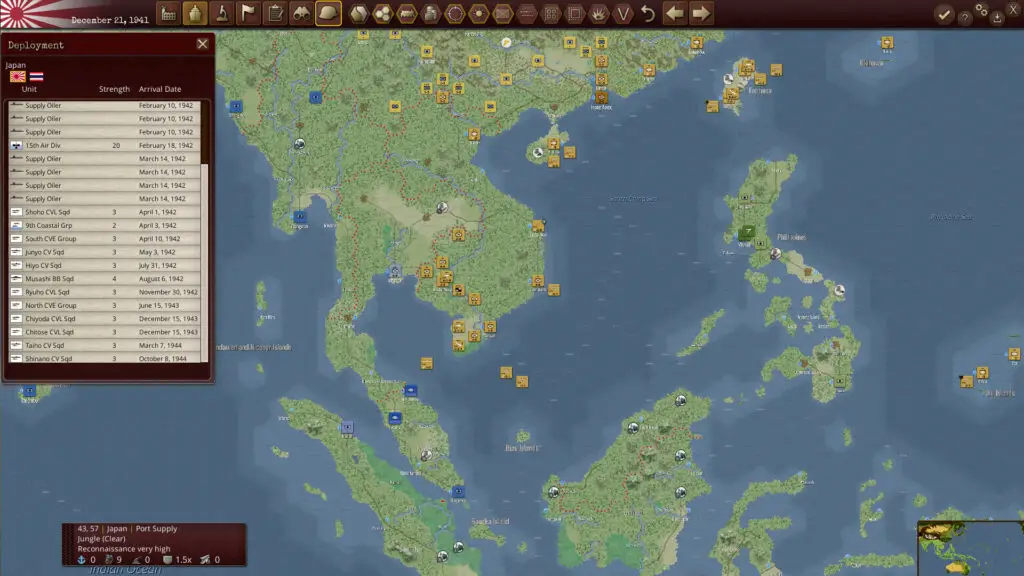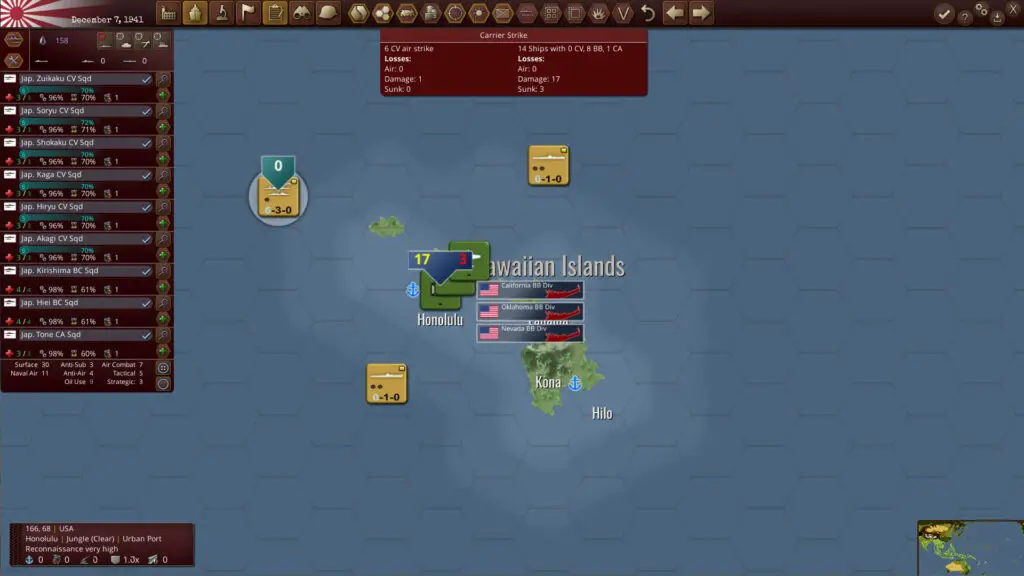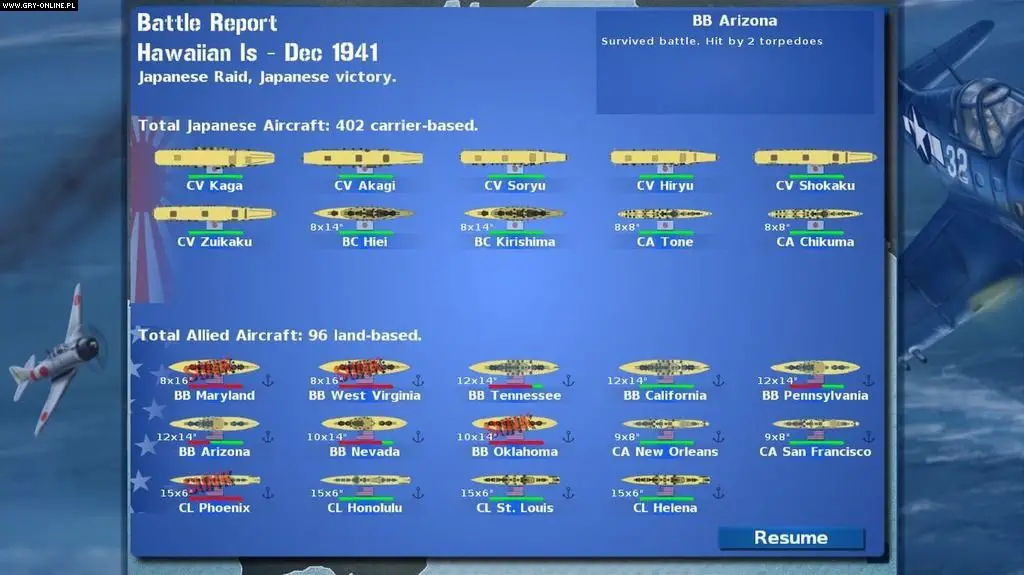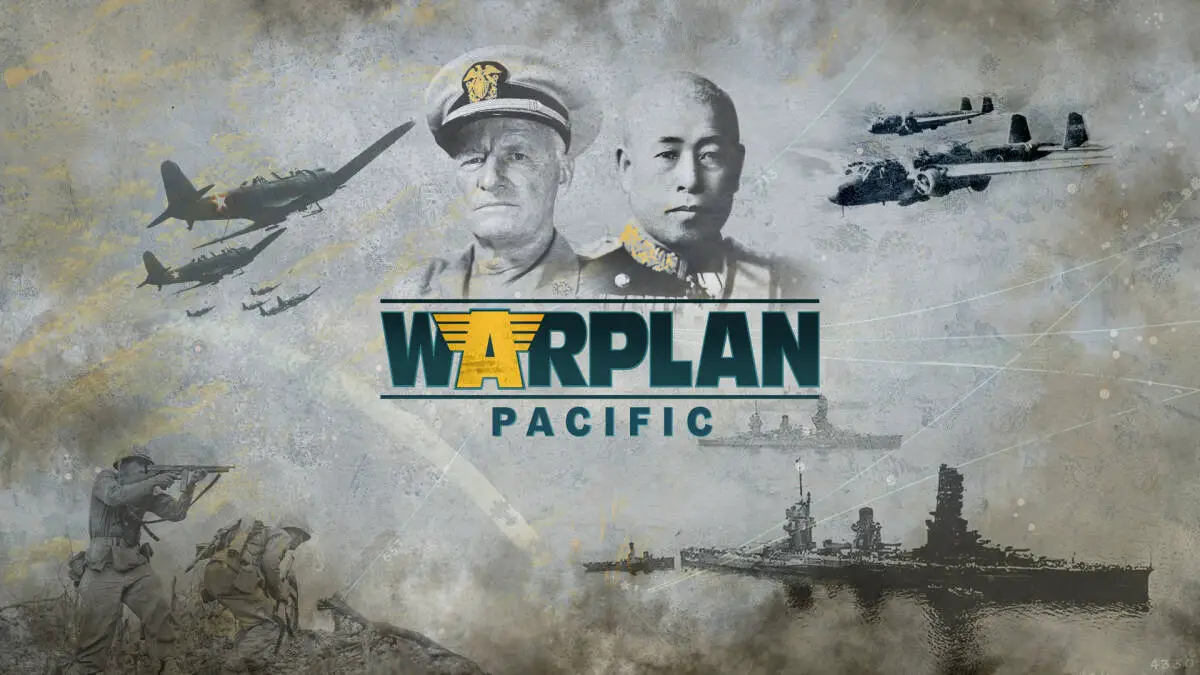In terms of sheer scale, there’s not been a bigger war than World War 2 and within that huge and varied war, there was no larger theatre than the Pacific theatre. Often thought of as the “sideshow” to the colossal slugging match on the Eastern front or the glamourous allied assault on the Western Front or even the desert duel between Rommel and Monty, the Pacific theatre offers a huge array of locations, battlefields, and weapons.

Warplan Pacific is a huge and very ambitious turn-based strategy, following on from the well-received Warplan by Kraken Studios and moving the action from Europe to Asia. The massive map ranges from the frontier of Russia all the way to Australia and New Zealand and the US West coast. The game is set at a massive scale, with each strength point of soldiers representing around two thousand men and each strength point of ships representing a ship or two, depending on the class. Even in the smaller scenarios, you’ll be dealing with a huge number of units with a dizzying array of capabilities and skills and there’s no one tool for every occasion.
The Pacific theatre generally calls for combined arms of the most complex variety, with warships needed to protect your troops as they move in slow and vulnerable transports and aircraft strikes from carriers far more lethal than any gunfire or torpedoes launched from a ship. Detection and fog of war are a key component of the game too and you’ll often find yourself trying to figure out if the unidentified unit you’re tracking is that enemy carrier group or just another squadron of destroyers.
There are multiple scenarios for you to play out in Warplan: Pacific, ranging from the big one, the entire Pacific campaign from 1941 to the bitter end to a smaller scenario just encompassing the battle of Okinawa, designed to be an introductory scenario. You can play as the Axis, the Allies, or play multiplayer, including hotseat.
Warplan: Pacific’s graphics are utilitarian, with NATO symbols and ship outlines. Clicking on a unit will open up its information panel so that you can get a feel for the unit’s capabilities across its attack and defence capabilities, as well as an array of other information. Make no mistake, Warplan: Pacific is a very complex game and there’s no in-game tutorial, you’ll need to pick it up as you go and refer to the games in-depth manual as you go, unless you’ve played the original Warplan in which case many of the key concepts will be familiar.

The basics see you moving units in order to take objectives, engage with enemy units and win the war. Resource producing areas, especially oil-producing ones, are vital to the war effort and you’ll want to get your land units to them to take control. Your ships will be there to provide the escort for these lands, though mainland China will see major land battles without any real intervention from ships.
You’ll also have a very wide array of combatants as well as unit types. As well as the obvious combatants of the US and Japan, there’s Great Britain, Nationalist, and Communist China, Russia, Holland, and many more nations. Each has its own units and capabilities, though the game doesn’t get quite as granular as specific classes of ship and plane. However, the unit construction option will allow you to fine-tune the selection of combat and support units, as well as assigning headquarters and even generals.
Unit graphics are coloured according to their nationality which helps identification but you’ll either need to refer to the manual or click on the unit (or have a good knowledge of NATO symbols) to pick out what unit is what from a distance.
As the axiom goes, infantry wins battles but logistics wins wars and Warplan: Pacific has a deep and complex logistics system. You’ll need to keep units in supply as well as supplied with oil (though certain low-tech units do not require oil to upkeep them). Cutting enemy units out of supply or encircling them is often the easiest and least costly way to win and allowing them to “wither on the vine” is very much in keeping with the way the Pacific campaign was waged by the allies.
Whilst the graphics are nothing to write home about in Warplan: Pacific, the UI is pretty solid, offering nice, clean graphics and making the odds of a combat or the cost to move a unit clear before you click. However, the game does hide a lot of information away inside submenus and sometimes you’ll need to click through multiple different screens and menus to get at the capabilities of a specific unit or to break up or pull together a formation.
The sound offers decent music and simple sound effects for movement and combat. You could easily switch both off and not miss anything.
In terms of gameplay, the game shines the most in naval warfare, which for a Pacific theatre game is essential. Carrier strikes are the deadliest tool in the arsenal and adding to the complex, granular options you can assign a carrier strike based on the target, with the amount of damage modified by the desired target. This simulates the change in ordinance and mission without getting even more granular with weapon selection.
Carriers are the heart of your navy, but they can’t operate alone. Destroyers will give you screening capacity as well as excelling against enemy submarines. Cruisers and battleships can easily sweep away enemy destroyers, as well as smashing up submarines at times. Subs are your best scouts and can pick off lightly guarded transports, convoys or even the occasional capital ship. The pain of losing a carrier to a submarine is quite something. In some scenarios, the US player will have a very ineffective submarine fleet due to the early war issues with defective torpedoes, which offers a fun and interesting wrinkle to the game-play.

There’s a lot to recommend with Warplan: Pacific but there are also some warnings. This is a huge, intimidating game, that doesn’t really attempt to hold your hand and can at times seem very opaque, with lots of interacting systems. The logistics side of the game is very deep and complex and it’s not just a question of lobbing huge stacks of units at each other, each element leans onto another one.
As mentioned, there’s no in-game tutorial, which feels like a throwback to the old PC games you’d get in a box (showing my age here) and read the manual before you played it. This means that the entry point to the game is quite steep and even playing the introductory scenario, you’ll need to try and figure out the various systems and what they mean, referring back to the manual as you go. There are some good tutorials and lets plays on YouTube which are well worth a watch.
The game’s AI is decent and makes some clever moves but at times will also do some rather odd things. During my campaign, the Nationalist Chinese failed to press their advantage a huge number of times and once simply failed to move at all.
The game’s complexity is not a problem as it is an intended feature of the game. But the steep learning curve will likely prove a bar to entry for some players. If you can get past that, there’s a deep, complex and satisfying game in here.
Warplan: Pacific also features a good number of scenarios which can be fought on either side or multiplayer. Hot seat works quite well for this game as long as you don’t sit by your opponent as they take their turn!
The game also features a powerful scenario editor which will allow you to build or fine-tune scenarios further. Warplan: Pacific is one of the most ambitious WW2 games I’ve played and comparisons to the legendary Gary Grigsby’s body of work are fair. If you’re a fan of complex WW2 games, the Pacific theatre or the original Warplan, then this game is going to a good fit for you. If not, then it may be worth watching a letsplay before you jump in as the waters are rather deep!









